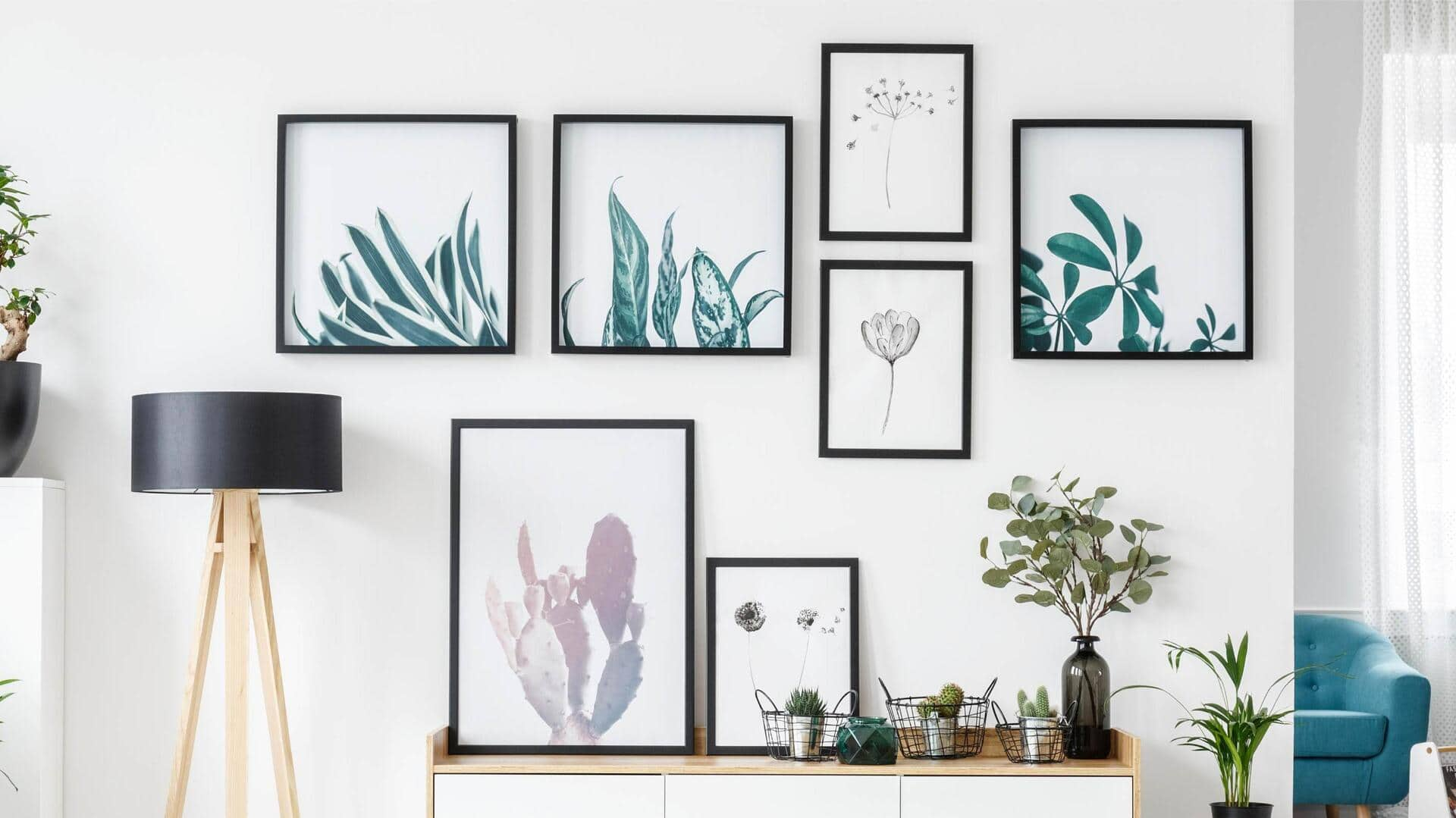
Turn blank walls into a timeless art display: Here's how
What's the story
Gallery wall displays are an ideal way to add art-inspired accents to a space and make it exude timeless elegance. By mindfully choosing and arranging artwork, photographs, and other decor, one can turn blank walls into mesmerizing visual stories. This not only beautifies a room but also speaks volumes about one's style and creativity. Be it home or office, gallery walls allow showcasing of favorite memories and artistic expressions.
Art selection
Selecting the right pieces
Choosing the right pieces for a gallery wall is critical for achieving a cohesive look. Consider mixing different types of art, like paintings, prints, and photographs, to add an element of surprise. But make sure you select pieces that resonate with you or complement the existing decor. Balancing colors and themes can create harmony within the display, while letting each piece shine on its own.
Layout planning
Arranging with precision
The arrangement of artworks is crucial to the overall effect of a gallery wall. Begin by placing out all pieces on the floor before putting them on the wall. Try different configurations until you find one that feels balanced. Consider using templates or guides to keep spacing consistent between frames. A well-planned layout ensures that each piece adds to an engaging visual narrative.
Personalization
Incorporating personal touches
Adding personal touches can make your gallery wall truly one of a kind. Throw in some family photos or memorabilia along with the traditional artwork for added depth and meaning. This personalization not only enhances emotional connection but also makes your guests feel more welcomed into your space. Mixing sentimental items with curated art creates layers of interest within your display.
Balance techniques
Maintaining visual balance
Achieving visual balance is key to creating a successful gallery wall display. Use symmetry as one method by placing similar-sized frames across from each other along central lines in your arrangement plan if you prefer. Or, go for the asymmetrical layout, which brings dynamic energy with different frame sizes placed strategically across compositions without visually overpowering viewers' senses.